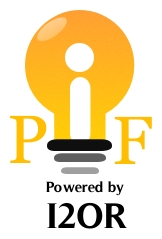In vitro evaluation of essential oil and water extracts from some medicinal and aromatic plants on colony growth of some soil and seed borne plant pathogens.
Abstract
The effects of essential oil extracts from Lemongrass (cymbopogon citratus), Spearmint (Mentha spicata), and Basil (Ocimum gratissimum) and water extracts from Neem (Azadirachta indica), Argel (Solanostemma argel) and Bitter leaf (Vernonia amygdlina), after mixing with artificial medium at three different levels (10%, 20%, and 30%) in vitro against the well-known chickpea pathogens; Fusarium oxysporum. f. sp. ciceris. Fusarium solani. f.sp. ciceris and Alternaria alternata. The colonies growth was significantly reduced, of course with slight variation of the effectiveness of extracts according to their concentration used. According to the results of these studies, the extracts from the above mentioned medicinal and aromatic plants have the significant ability to inhibit the colonies growth of the different studied fungi. Argel and Neem aqueous extracts were found to be the more effective than the others, while Bitter leaf extract had moderate effect on the colonies growth of the above mentioned fungi.
Downloads
References
- Kavitha, R., Umesha, S., and Shetty, H. S., (2005). Dose dependent impact of
dominant seed-borne fungi on seed germination and seedling vigor of
cotton seeds. Seed Research. 33(2): 187–194.
- Muller, A., Schmidhuber, J., Hoogeveen, J., Steduto, P., (2008). Some
insights in the effect of growing bio-energy demand on global food
security natural resources. Water Policy 10: 83–94.
- Reino LR, Raul F, Hernández-Galán GR, Collado IG (2008) Secondary
metabolites from species of the biocontrol agent Trichoderma.
Phytochem Rev 7: 89-123.
- Riker, A. J., Riker, R. S., (1936). Introduction to Research on Plant Diseases.
John Swift Co.New York, USA. Phytoparasitica; 30 :(2), 169-176.
- Salih, H. S., Ageeb, O. A., Saxena, M. C., Mahmoud, B., (1996) Production and
improvement of cool-season food legumes in the Sudan. ICARDA,
Report : 153-164.
- Sati SC, Joshi S (2011). Antibacterial Activity of the Himalayan Lichen
Parmotrema nilgherrense. BMRJ.; 1(2): 26-32.
- Singh, D., R., and Singh, D., (1997). Neem leaf aqueous extract induced
growth, pigments and photosynthesis responses of cyanobacterium
(Nostoc muscorum) India. Journal of Science 136 : (1), 75-81.
- Touba, E. Zakaria, M. (2011). Anti-fungal activity of cold and hot water
extracts of spices against fungal pathogens of Roselle (Hibiscus
sabdariffa) in vitro. School of Biological Sciences, Universiti Sains
Malaysia, 11800 USM, Pulau Penang, Malaysia. J Agric Food Chem. 2011
Nov 30;: 22129092 .
- Vincent, J.M. (1947). Distribution of fungal hyphae in the presence of
certain inhibtors. Nature 150: 850.
- Vishwadhar, Gurha, S. N., (1998). Integrated management of chickipea
diseases.
Rajeev, K., Upadhyay, K.G., Mukerji, B.P., Chamola and Dubey, O.P.
(eds.). integrated pest and disease management. APH Publishing Co.,
New Delhi. ( India). Pp.249.
Copyright (c) 2020 GPH - International Journal of Agriculture and Research

This work is licensed under a Creative Commons Attribution-NonCommercial-NoDerivatives 4.0 International License.
Author(s) and co-author(s) jointly and severally represent and warrant that the Article is original with the author(s) and does not infringe any copyright or violate any other right of any third parties, and that the Article has not been published elsewhere. Author(s) agree to the terms that the GPH Journal will have the full right to remove the published article on any misconduct found in the published article.


























